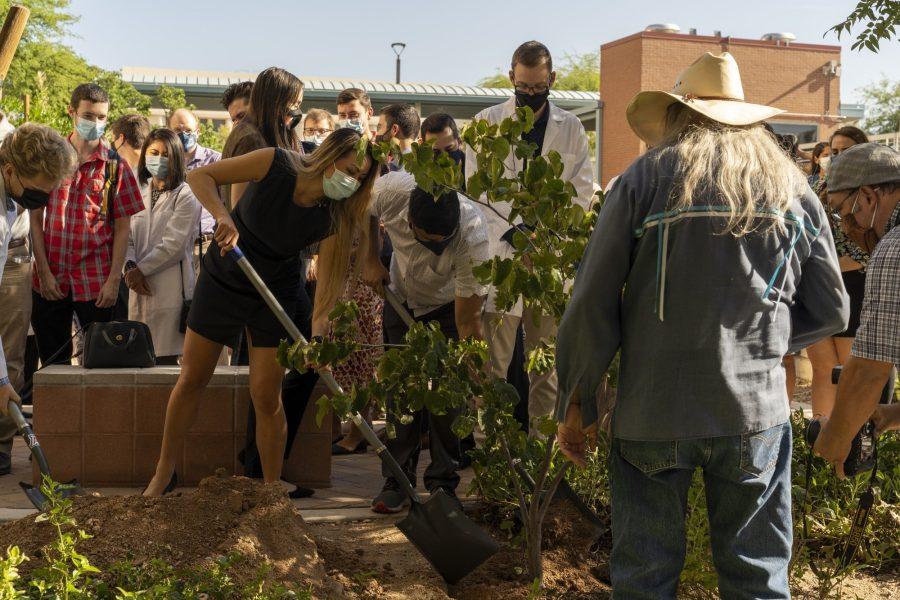The University of Arizona College of Medicine class of 2024, participated in the annual Tree Blessing Ceremony. This ceremony honors individuals and families who donated their bodies to the College of Medicine for anatomy instruction and dissection.
The ceremony was held on Wednesday, Aug. 25, and led by Dr. Carlos Gonzales, assistant dean of curricular affairs and director of both the Rural Health Professions Program and the Commitment for Underserved Peoples Program.
During the Tree Blessing Ceremony, Gonzales performed a smudging, a pan-Native American cleansing ritual that is meant to rid participants of negative energy. In this case, the smudging is performed to cleanse negative feelings associated with the dissection of human cadavers.
RELATED: Students earn $1K by participating in this COVID-19 study
“The ceremony was first performed in 2007 when I was approached by two American Indian [medical] students who asked me to do a blessing before they worked on their willed body,” Gonzales said. “The reason they wanted that done is because the students came from a tribe where it is considered taboo to touch a dead body.”
Soon after, other medical students heard about the ceremony and expressed interest in having it performed for them. Since then, the ceremony has been performed for each class at the beginning of their second year of medical school.
“The university wanted to also do a Willed Body Ceremony because they had heard it was done by the [Gold Humanism Honor Society],” Gonzales said. “We wanted to incorporate the blessing that I was doing with a tree planting ceremony in honor of the willed bodies. After the blessing, we now plant a tree to honor the individuals who willed their bodies to education.”
According to a study, cadaveric dissections are integral to the instruction of anatomy in medical school. Through dissections, medical students are able to explore the human body in a unique and intimate way. This process allows students to develop practical skills and knowledge that is essential for practicing medicine.
According to Amogh Pathi, a second-year medical student at the College of Medicine, the ceremony is a reminder of the privilege and responsibility that comes with pursuing the medical profession.
“The ceremony was wonderful and made me realize how lucky we are to be in medical school,” Pathi said. “My willed body was in a way my first patient and I am honored to have had the opportunity to learn from them. It was an unforgettable experience that will make me a better physician.”
The ceremony is also a way to recognize traditional American Indian practices. At the College of Medicine, Gonzales plays an integral role in educating medical students on matters of cultural-sensitivity, the physician-patient relationship as well as the culture and practices of American Indians in the southwest.
“To me, the ceremony is a great way to incorporate American Indian philosophy and open up the eyes of many [medical students] who have never seen a Native American ritual or have never experienced Native American spirituality,” Gonzales said.
As a member of the Pascua Yaqui tribe and a student of traditional American Indian medicine, Gonzales has intimate knowledge of traditional healing practices. With this knowledge, he facilitates collaboration between Western allopathic medicine and traditional healers.
Rushabh Daulat, a second-year medical student who participated in the ceremony, said the ceremony symbolizes the unity between different cultures and ideals.
“For me, the ceremony shows how important it is to incorporate multiple ideologies and traditions into medical practice,” Daulat said. “After all, as future physicians we are going to work with people with unique beliefs about health and spirituality. It is our responsibility to learn as much as we can to be inclusive in the way we provide care.”
Follow Andres Diaz on Twitter









